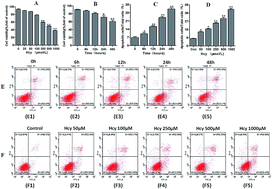Homocysteine induces human mesangial cell apoptosis via the involvement of autophagy and endoplasmic reticulum stress
Abstract
Homocysteine (Hcy) level characterizes a progressive increase in chronic kidney disease (CKD). In fact, Hcy accumulation is considered to be a crucial biochemical culprit in CKD progression, but the mechanism underlying this remains poorly understood. This study investigated the role of Hcy in glomerular mesangial cell (MC) apoptosis and the potential involvement of autophagy and endoplasmic reticulum (ER) stress in this process, shedding light on Hcy toxicity in kidney disease. Human mesangial cells (HMCs) were incubated with different concentrations of Hcy for different times. Flow cytometry was used to determine the proportion of apoptotic cells and western blotting was used to analyze protein levels after the administration of Hcy, endoplasmic reticulum inhibitor 4-phenylbutyric acid (4-PBA), and Atg5 siRNA. The results demonstrated that the cell viability gradually decreased and the proportion of HMCs undergoing apoptosis increased with increasing Hcy concentration and prolonged incubation time. Meanwhile, levels of the apoptosis-related proteins Bax and cleaved caspase-3 were significantly increased, while ER stress-related proteins such as ATF4, CHOP, GRP78, and phospho-eIF2α significantly increased. Levels of cleaved LC3, and beclin1 and Atg5 proteins also increased, accompanied by p62 degradation, indicating autophagy activation. 4-PBA effectively inhibited ER stress and reversed Hcy-induced apoptosis and autophagy. Moreover, Atg5 siRNA alleviated Hcy-induced apoptosis. Taken together, these results suggest that Hcy induces HMC apoptosis in a dose- and time-dependent manner via the activation of Atg5-dependent autophagy triggered by ER stress. This study suggests a novel strategy against Hcy toxicity in kidney injury and should help in clarifying the pathogenesis of CKD.



 Please wait while we load your content...
Please wait while we load your content...